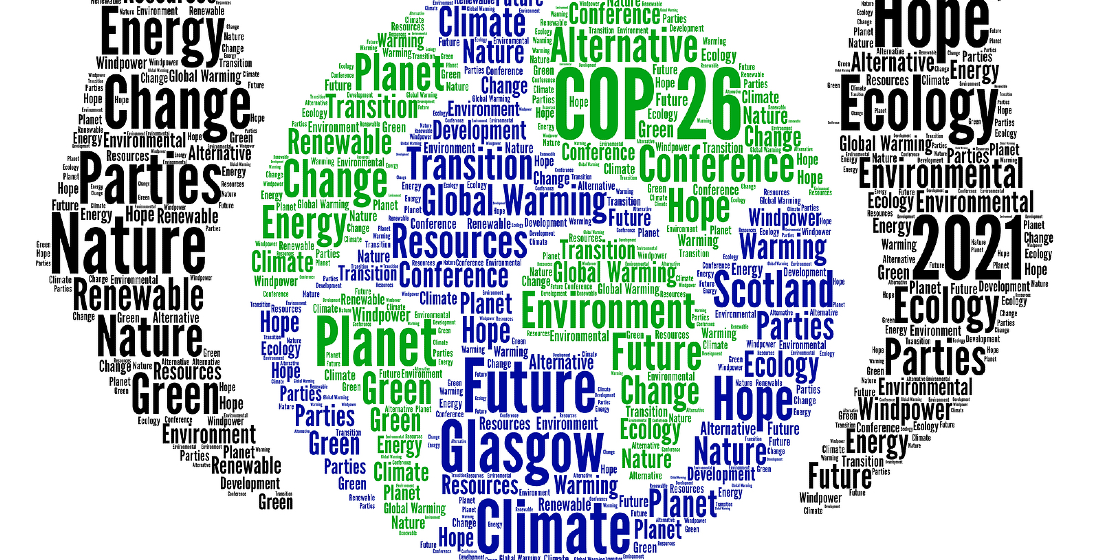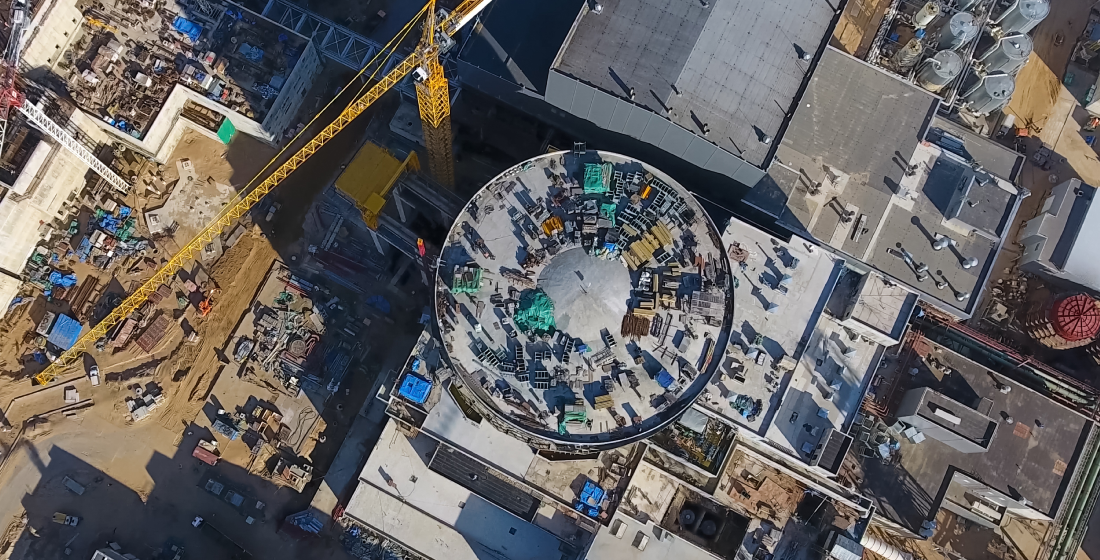COP-ious pledges to transform climate finance?
COP26 has marked a tectonic shift in the architecture of the global financial system to deliver net zero. But the next NDCs should be sooner than every five years to set a sustainable trajectory. And the granular regulatory level needs more attention.

The headline numbers churning out of the aggregated COP26 PR machine are unprecedented. Last week, climate finance took centre stage: ten G20 countries increased their climate finance commitments to developing countries; Norway agreed to triple its adaptation finance; Japan and Australia promised to double their adaptation finance pledges; alongside commitments from Switzerland, the US and Canada for the $850 million Adaptation Fund.
This included the largest US adaptation finance commitment to date, to reduce climate impacts on those most vulnerable to climate change worldwide. While Canada committed to allocate 40% of its climate finance to adaptation.
New commitments for climate financing also came from the UK, Spain, Japan, Australia, Norway, Ireland, and Luxembourg; building the Paris Agreement’s pledge to deliver the $100 billion per year to developing countries – now not expected to be achieved until 2023.
The development banks and multinational finance institutions also pitched in with new commitments. Initiatives announced by the World Bank and ADB will share risk with developing countries and aim to raise up to $8.5 billion in new finance in support of climate action and sustainable development. The ADB additionally launched the Energy Transition Mechanism (ETM) to accelerate the retiring of coal power and the move to clean energy – as part of the pilot phase in Indonesia, the Philippines, and Vietnam, the ETM is expected to raise $2.5-$3.5 billion to retire two to three coal-fired power plants per country.
The IFC, along with the Hong Kong Monetary Authority (HKMA) and Allianz, launched a new global platform, MCPP One Planet, for Paris-Aligned climate smart investments that will provide up to $3 billion to private enterprises in developing economies. The IFC also teamed up with Amundi to launch a new $2 billion fund that will help to directly mobilise private investment into sustainable and green bonds in emerging markets.
There was also the launch of a new financing mechanism – the Climate Investment Funds’ Capital Markets Mechanism (CCMM) – that will boost investment into clean energy in developing countries. Bonds are planned to be issued in 2022 in the City of London and could mobilise up to $700 million annually, with the potential to leverage a further $70 billion from both the private and public sector.
UN special envoy on climate finance Mark Carney’s claim of $130 trillion of private finance committed to science-based 2050 net-zero targets and near-term milestones through the Glasgow Financial Alliance for Net Zero (GFANZ) is the most landmark of all the headline grabbing numbers, though. An accelerator to energy transition no doubt.
“The architecture of the global financial system has been transformed to deliver net zero,” said Carney. “We now have the essential plumbing in place to move climate change from the fringes to the forefront of finance so that every financial decision takes climate change into account. Only this mainstream focus can finance the estimated $100 trillion of investment needed over the next three decades for a clean energy future."
GFANZ comprises 450 banks, insurers and asset managers of which investment managers account for $57 trillion of the pledged assets, banks $63 trillion and asset owners $10 trillion. Carney’s eye-watering figure has attracted plenty of criticism, not least that banks still fund fossil fuels.
But the very act of putting GFANZ together and setting a verifiable agenda is progress – GFANZ members are required to set science-based near-term targets within 12-18 months of joining, and more than 90 of the founding institutions have already done so. All members will report their progress and financed emissions annually, and will review their targets every five years.
But while the “plumbing” may be in place, it still needs considerable fettling. Project finance in all its debt guises should have a large role in GFANZ, but with Basel regulations the way they are, that role has regulated capital limits.
While Basel is considering how to measure and reduce the financial-stability risks stemming from climate change – most notably the growing potential for stranded fossil fuel-linked assets during the energy transition – it should also be considering how to free up regulatory capital for project finance lenders in transition and future renewables sectors. While some argue this would incentivise less due diligence and more chance of irresponsible bank lending to start-ups in untested markets – understandable given memories of 2008 still linger – the reality (one that is confirmed annually by S&P) is that project lending – because of the tenors of debt on offer – has always been well disciplined, with a history of very low default rates and high recovery rates that survived both fallout from 2008 and Covid-19 and was established long before the last round of Basel regulations came in.
Similarly, upping banks’ risk weighting for certain fossil fuels projects could be equally detrimental. The world is not going to be able to do without gas overnight, nor are politicians going to up carbon prices to the point consumers are significantly hurt. Given those caveats, project finance lenders – whether banks or specialised institutional investors – are arguably better placed than regulators to decide levels of project default risk and the tenors they are willing to lend at given the 2050 net zero target.
Another set of basic plumbing issues continues to hold back the development of blended finance. Mixing and matching multiple stakeholders – typically DFIs, ECAs, charities, impact investors and commercial lenders – with different objectives and goals is key to blended finance. Bringing them together and finding the optimal structure for financing projects is a major hurdle, particularly with regard to the allocation of risk and return among the various financiers and their respective objectives. On the one hand, excessive concessionality can run the risk of distorting or disrupting the markets, on the other, frugal concessionality lacks the ability to entice private investors to appropriately replicate similar transactions in the future.
Commercial viability over time is also an important consideration in structuring a blended deal. “When a project is designed, the blended finance portion has to be visibly fizzling out, and from a certain point, it has to become commercially viable,” says Albena Melin, deputy director, donor co-financing at the EBRD. “We assess the potential development impact of a project, and if we're envisaging a huge development impact, we might need to allow for some higher concessionality to make it happen. Not 20% but maybe 30% or 35%, which is a huge amount of concessional financing. But then you have to refinance it later on, on a purely commercial basis before the project is over. So, the whole blended finance part stops much earlier and you must make an assessment about how much development impact can be achieved. And does the larger development impact actually justify a higher amount of blended finance initially? These are all questions we and other DFIs are grappling with when investing in the private sector in transition countries and emerging markets.”
In October 2021, the Investor Leadership Network (ILN), in collaboration with The Rockefeller Foundation, released a Blended Finance Blueprint, proposing seven specific actions the blended finance community can take to reduce risk and increase sustainable investments in emerging and frontier economies. The report asks public sector actors MDBs, governments, and foundations to change how they involve the private sector in financing global sustainable development. “Private investors face an unattractive risk-return nexus; they lack easy access to crucial information: example, which projects the public sector is planning that they could take part in, and what they entail. Exposure to the risks of investing in less mature markets, with insufficient insurance available, deters them as well,” the report says.
The solutions presented by the ILN’s blueprint include: creating a rolling pool of funds offering first or second-loss guarantees so the private sector can cover currently hard-to-insure risks such as those relating to regulatory changes, taxation, and reputational risk; creating a separate facility to help with one of the biggest obstacles, foreign exchange risk; creating a detailed shared database of projects that MDBs are screening so that private investors can express an interest early on; setting up a searchable virtual toolbox so investors can more easily find the plethora of currently little-known risk-hedging instruments that MDBs and philanthropic organizations offer; give the private sector full access to emerging market risk data and information.
COP26 will have been a success if governments and regulators deliver on the promises made over the past week. But despite all the driving strategies, gear change will only come at the granular level. And the Nationally Determined Contributions (NDCs), whereby the Paris Agreement requests each country to outline and communicate their post-2020 climate actions, need to be submitted sooner than every five years to achieve a sustainable trajectory.
Become a TXF subscriber for unrestricted access to TXFnews.com 365 days a year
Contact us for individual and team rates by emailing subscriptions@txfmedia.com
Take a look below at some of the exclusive subscriber articles published last week
Features
COP-out or green finance progress?
The plethora of pledges emerging apace from COP26 are expected to spur a spate of emerging market corporate issuance in the capital markets. But with green finance taking centre stage in energy transition, will all these commitments be realised? And how many will be legally binding?....Read on here
The success of the Uzbekneftegaz $3.6 billion GTL (gas-to-liquid) project – launching in early 2022 - paves the way for other major industrial projects in the country. Following on from this project we can expect to see greater involvement from a wider range of international financiers....Read on here
Stages for change: ‘Small tickets are important, but hardly anybody gives them credit’
In this week’s edition of the Stages for Change interview series, Sabine Vigneron and Angie Dorschel discuss the power of coincidence, working together to champion small ticket financings, and the role that digitalisation will play in the future of export finance....Read on here
NIBs
ACWA out to banks for Neom green hydrogen project
ACWA Power and Air Products are sounding out banks for its $5 billion world-scale green hydrogen-based ammonia production facility powered by renewable energy at the planned city of Neom in Saudi Arabia....Read on here
Arctic LNG 2 project funding mix changes
Bpifrance has dropped out of the $11 billion ECA-covered debt package backing the Novatek-led Arctic LNG 2 scheme in Russia. Financial close is now expected early next year....Read on here
NeuConnect out to banks for project loan
Financing for the €1.8 billion ($1.61 billion) 1.4GW NeuConnect interconnector project between the UK and Germany was launched to lenders in late October. Sponsored by Meridiam (53.5%), Allianz Capital Partners (26.2%) and Kansai Electric (18.3%), the 720km interconnector will be the first direct link between UK and German electricity networks....Read on here
Ukrenergo in talks over ESG-tied bond
State-owned National Power Company Ukrenergo of Ukraine released initial price talk for its debut dollar ESG-tied green bond on Tuesday morning in London....Read on here
GIP raising debt for Pluto LNG 2 stake
Global Infrastructure Partners is raising a significant debt facility to back its potential acquisition of a 49% stake in Woodside Energy’s Pluto LNG Train 2 project in Australia....Read on here
Carlyle Group reprices Liberty and Patriot debt
Carlyle Group – via Hamilton Projects Acquiror LLC – has signed on a repricing of the loan it raised in June 2020 to finance the acquisition of the 829MW Liberty Energy Center and 842MW Patriot Energy Center in Pennsylvania....Read on here
James Collins joins FCMB Bank UK
James Collins has joined FCMB Bank UK as manager, middle office, trade services, forfaiting and loans from UBA UK where he had been head of distribution and trade finance origination since August 2019....Read on here





